
How psychology works the facts visually explained (DK) (Z-Library)
.pdf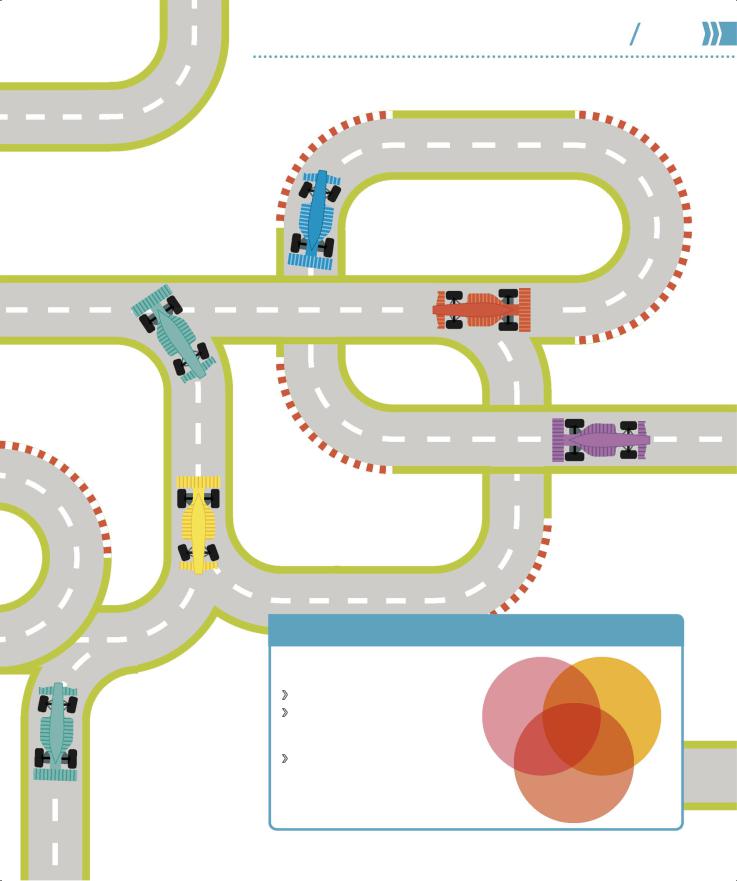
Adrenaline
Released in stress situations, adrenaline creates an energy surge that increases heart rate, blood pressure, and blood flow to the larger muscles.
ADRENALINE
WHAT IS PSYCHOLOGY? |
28 29 |
How the brain works |
Norepinephrine
Similar to adrenaline, this excitatory neurotransmitter is mainly associated with the fight-or-flight mechanism; it is also linked to stress resilience.
NOREPINEPHRINE
GABA
GABA
The brain’s main inhibitory
neurotransmitter, GABA slows the firing of neurons and is calming.
SEROTONIN
Serotonin
With an inhibitory effect, serotonin is linked to mood enhancement and calmness. It regulates appetite,
temperature, and muscle movement.
DOPAMINE
Dopamine
With either an inhibitory or an excitatory effect, dopamine plays a key role in rewardmotivated behavior and links to mood.
ENDORPHINS
Endorphins
Released by the pituitary gland, endorphins have an inhibitory effect on the transmission of
pain signals; they are associated with pain relief and feelings of pleasure.
CHEMICAL EFFECTS AND OVERLAPS
These three neurotransmitters have distinct yet interrelated roles.
All affect mood.
Norepinephrine and dopamine are both released in stressful situations.
Serotonin moderates a neuron’s response to the excitatory effects of dopamine and norepinephrine.
|
|
E |
S |
|
|
|
E |
|
|
|
|
N |
R |
|
|
I |
O |
||
H |
R |
|
|
T |
P |
|
Mobilizing |
Emotional |
N |
|
|
|
|
O |
E |
body under |
well-being |
I |
|
N |
N |
|||
I |
|
stress |
|
|
E |
|
|
|
|
P |
|
|
MOOD |
|
R |
|
|
|
|
O |
|
|
|
|
N |
|
|
|
|
|
|
O |
Fluid muscle |
|
|
|
D |
|
|
|
|
A motion; rewarding |
|
|
|
|
P |
motivation |
|
|
|
I |
|
|
|
|
M |
|
|
|
|
N |
|
|
|
|
E |
|
|
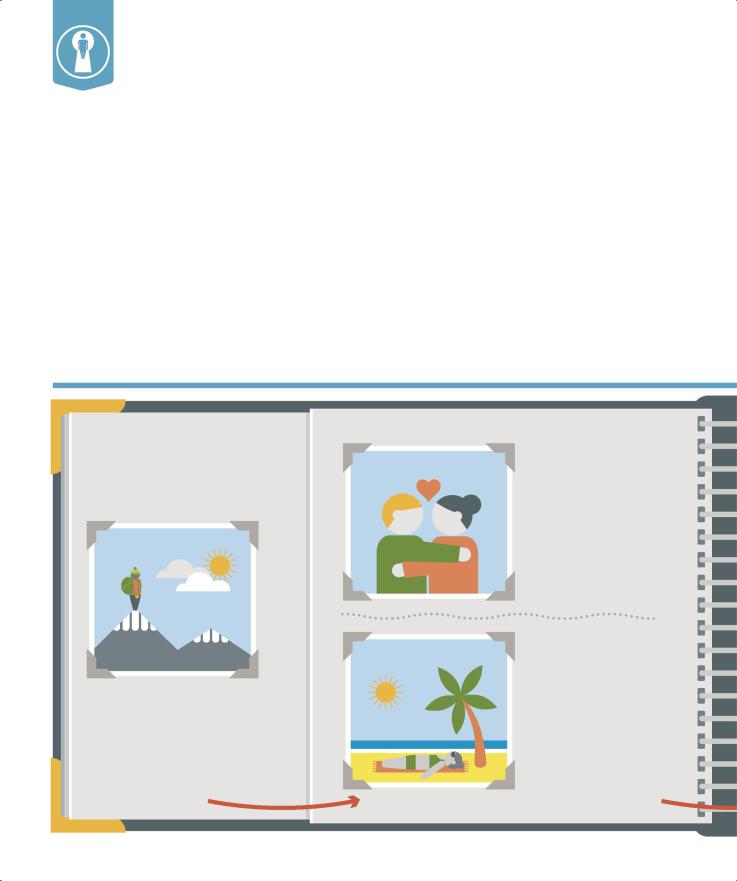
How memory works
Every experience generates a memory—whether it lasts depends on how often it is revisited. Intricate neural connections allow memories to form, and these can strengthen, aiding recall, or fade away.
What is memory?
A memory is formed when a group of neurons fire in a specific pattern in response to a new experience— these neural connections can then refire in order to reconstruct that experience as a memory. Memories are categorized into five types (right). They are briefly stored in the short-term (working) memory but can fade unless the experience is of emotional value or importance,
in which case it is encoded (below) in the long-term memory. In recalling a memory, the nerve cells that first encoded it are reactivated. This strengthens their connections and, if done repeatedly, solidifies the memory. A memory’s component parts, such as related sounds or smells, reside in different areas of the brain, and in order to retrieve the memory all of these brain parts must be activated. During recall a
memory can merge accidentally with new information, which fuses irrevocably with the original (known as confabulation).
Endel Tulving explained memory as two distinct processes: storing information in long-term memory, and retrieving it. The link between the two means that being reminded of the circumstances in which a memory was stored can act as a trigger to recall the memory itself.
How memories form
The process of laying down (encoding) |
0.25 SECONDS |
a memory depends on many factors. |
|
Even once encoded a memory can take |
|
two years to be firmly established. |
|
0.2 SECONDS |
|
0.2—0.5 SECONDS
1. Attention
Focusing attention on an event helps to solidify the memory: the thalamus activates neurons more intensely, while the frontal lobe inhibits distractions.
2a. Emotion
High emotion increases attention, making an event more likely to be encoded into a memory. Emotional responses to stimuli are processed in the amygdala.
2b. Sensation
Sensory stimuli are part of most experiences, and if of high intensity they increase the chances of recollection. Sensory cortices transfer signals to the hippocampus.
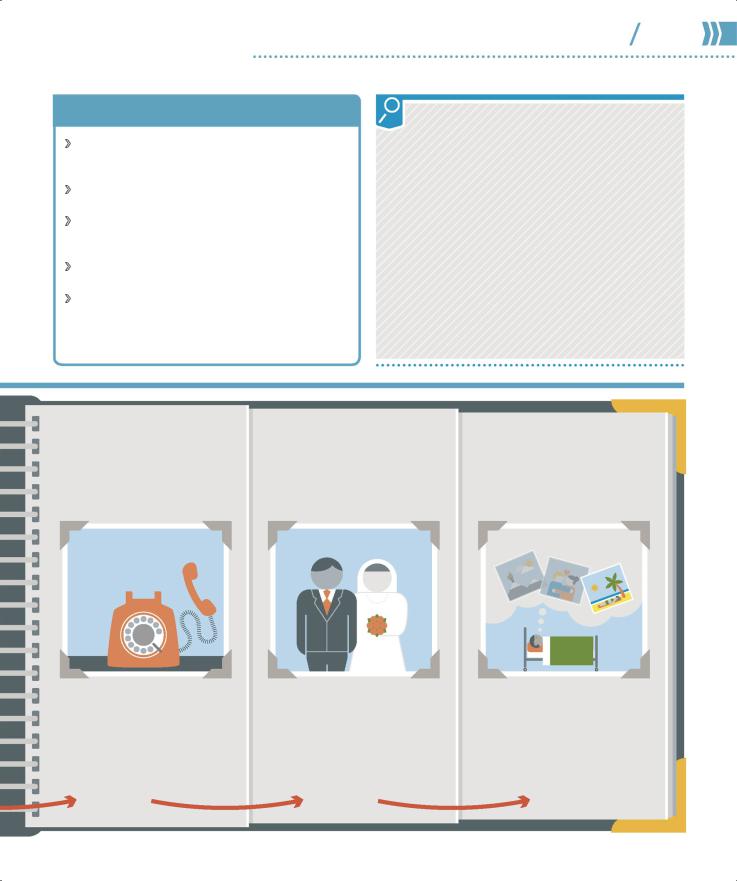
TYPES OF MEMORY
Episodic memory Recalling past events or experiences, usually closely linked with sensory and emotional information.
Semantic memory Retaining factual information, such as the name of a capital city.
Working memory Storing information temporarily; capable of holding between five and seven items at any one time; also known as short-term memory.
Procedural (body) memory Using learned actions that require no conscious recall, such as riding a bicycle.
Implicit memory Bringing back an unconscious memory that influences behavior, such as recoiling from a stranger reminiscent of someone unpleasant.
WHAT IS PSYCHOLOGY? |
30 31 |
How memory works |
CASE STUDY: BADDELEY’S DIVERS
Studies by psychologists indicate that in retrieving memories humans are aided by memory cues. British psychologist Alan Baddeley conducted an experiment in which a group of divers were asked to learn a list of words—they learned some words on dry land and some underwater. When they were later asked to recall the words, most divers found recall easier in the physical environment in which they had first memorized them, so it was easier to remember the words learned underwater when they went underwater. Baddeley’s experiment suggested that context itself could provide a memory cue. Similarly, when a person goes to collect an object from another room but on arriving cannot recall what they were looking for, often returning to the original room triggers that memory cue.
“Memory is the treasury and guardian of all things.”
Cicero, Roman politician
0.5 SECONDS—10 MINUTES |
10 MINUTES—2 YEARS |
2 YEARS ONWARD |
|
555 |
555 |
|
- |
|
|
- |
|
|
9876 |
|
|
|
|
555 |
6549 |
|
|
|
|
- |
|
|
|
7894 |
|
555 - 3450
555-0127
3. Working memory
Short-term memory stores information until needed—it is kept active by two neural circuits that incorporate the sensory cortices and the frontal lobes.
4. Hippocampal processing
Important information transfers to the hippocampus, where it is encoded. It can then loop back to the brain area that first registered it, to be recalled as a memory.
5. Consolidation
The neural firing patterns that encode an experience carry on looping from the hippocampus to the cortex—this firmly fixes (consolidates) it as a memory.

How emotions work
The emotions an individual feels on a daily basis dictate the type of person they feel they are. And yet it is a series of biological processes in the brain that generate every feeling a person has.
What is emotion?
Emotions impact hugely on people’s lives—they govern their behavior, give meaning to their existence, and are at the core of what it is
to be considered human. Yet in reality emotions result from physiological responses in the brain triggered by different stimuli—the psychological significance read into emotions is an entirely human
construct. Emotions evolved to promote human success and survival by initiating certain
behaviors: for example, feelings of affection prompt the desire to find a mate, reproduce, and live in a group; fear generates
a physiological response to avoid danger (fight-or-flight); reading emotions in others makes social bonding possible.
Processing emotion
The limbic system (p.26), located just under the cortex, generates all emotions. They are processed via two routes, conscious and unconscious (below). The primary receptor that “screens” the emotional content of all incoming stimuli is the amygdala, which signals to other areas of the brain to produce an
Conscious and unconscious emotive routes
Humans experience their emotional responses through an unconscious route, which is designed to prepare the body for rapid action (fight-or-flight), or via a conscious route, which enables a more considered response to a situation. The amygdala responds to threat and can detect stimuli
before the person is even aware of it, provoking
an automatic, unconscious reaction. A simultaneous, but slower, transmission of sensory information to the cortex creates a conscious secondary route for the same stimulus, and can modify this initial reaction.
CONSCIOUS
ROUTE
SLOW, ACCURATE
Thalamus
All sensory information comes to the thalamus for distribution to the amygdala for quick assessment and action, and to the cerebral cortex for slower processing to conscious awareness.
Sensory cortex
All sensory information comes to the sensory cortex for recognition. It extracts more information along this path, but the process takes longer than the unconscious route.
UNCONSCIOUS |
Amygdala |
signals to other areas for |
|
|
The amygdala instantly assesses |
|
incoming information for |
|
emotional content. It sends |
|
immediate bodily action. It |
|
operates unconsciously and |
|
so is liable to make errors. |
Hippocampus
Consciously processed information is encoded in the hippocampus to form memories. The hippocampus also feeds back stored information, confirming or modifying the initial response.
Hypothalamus
Signals from the amygdala come to the hypothalamus, which triggers hormonal changes that make the body ready for “fight or flight” in response to emotional stimuli. The muscles contract and the heart rate increases.
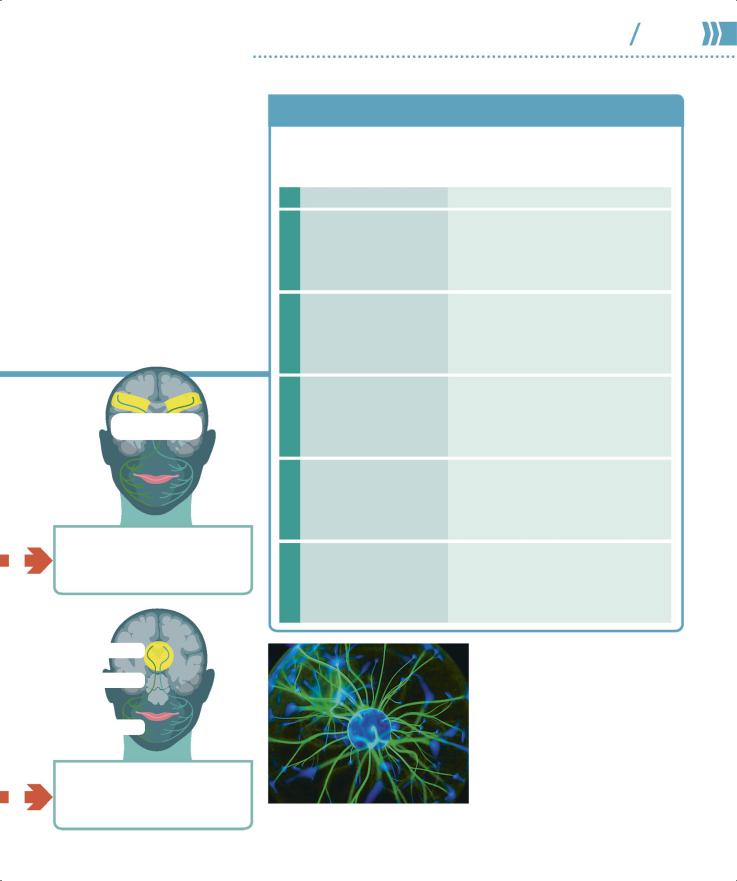
appropriate emotional response. Connections between the limbic system and the cortex, in particular the frontal lobes, enable emotions to be processed consciously and experienced as valuable “feelings.”
Each emotion is activated by a specific pattern of brain activity— hatred, for example, stimulates the amygdala (which is linked to all negative emotion) and areas of the brain associated with disgust, rejection, action, and calculation. Positive emotion works by reducing activity in the amygdala and those cortical regions linked to anxiety.
CONSCIOUS
INTERVENTION
CONSCIOUS FACIAL EXPRESSIONS
The motor cortex allows a person to control facial expression and so hide or express genuine emotion.
FEELING
SIGNALS
EXPRESSION
REFLEX FACIAL EXPRESSIONS
WHAT IS PSYCHOLOGY? |
32 33 |
How emotions work |
EMOTIVE BEHAVIORS AND RESPONSES
Typical behavioral patterns in response to emotion have evolved in order to neutralize any perceived threat, through either fight or appeasement. In
contrast, moods last longer, are less intense, and involve conscious behaviors.
|
POSSIBLE STIMULUS |
BEHAVIOR |
|
ANGER |
Challenging behavior |
Provokes unconscious response |
|
from another person |
and rapid emotion; “fight” reaction |
||
|
stance or action |
||
|
|
prompts dominant and threatening |
|
|
Threat from stronger or |
Provokes unconscious response and rapid |
|
FEAR |
more dominant person |
emotion; “flight” response avoids threat, |
|
|
or a show of appeasement indicates lack |
||
|
|
||
|
|
of challenge to dominant person |
|
SADNESS |
Loss of loved one |
Conscious response dominates; |
|
|
longer-term mood; backward-looking |
||
|
|
||
|
|
state of mind and passivity avoid |
|
|
|
additional challenge |
|
DISGUST |
Unwholesome object |
Provokes unconscious rapid response; |
|
such as rotting food |
aversion prompts swift removal of self |
||
|
|||
|
|
from unhealthy environment |
|
SURPRISE |
Novel or unexpected |
Provokes unconscious rapid response; |
|
event |
attention focuses on object of surprise to |
||
|
|||
|
|
glean maximum information that guides |
|
|
|
further conscious actions |
|
|
|
“Human |
|
|
|
behavior |
|
|
|
flows from ... |
|
|
|
desire, emotion, |
|
|
|
knowledge.” |
The emotional reaction caused by the amygdala sparks spontaneous, uncontrolled facial expressions.
Plato, ancient Greek philosopher
EVERY EMOTION sparks a slightly different pattern of activity in the brain.

PSYCHOLOGICAL DISORDERS
The distressing symptoms of a psychological disorder often go hand in hand with circular thoughts, feelings, and actions. When the symptoms form a recognizable pattern, a doctor can diagnose and treat a person.
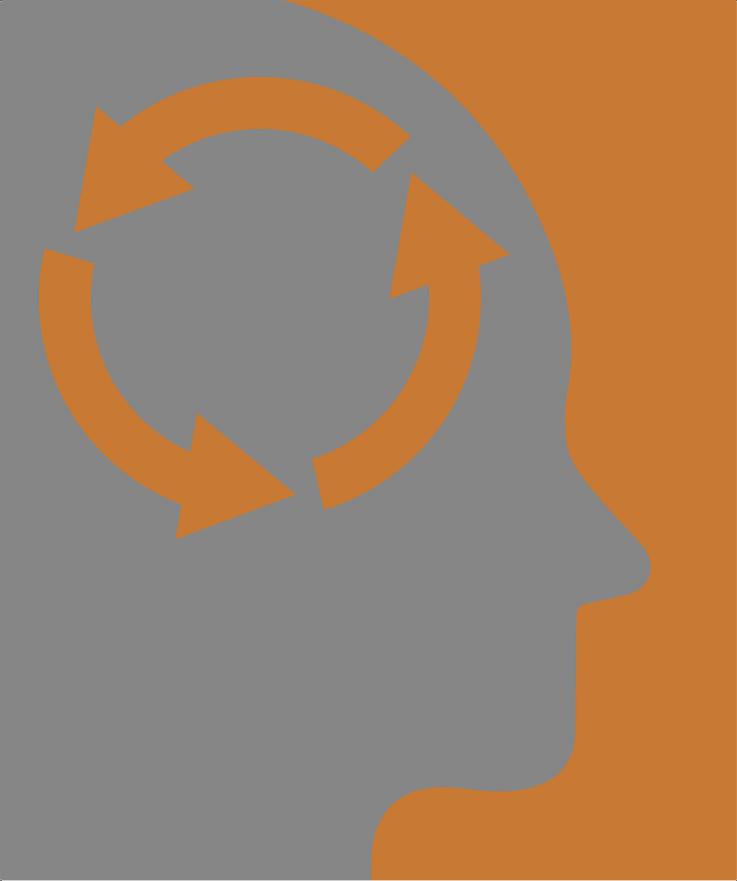
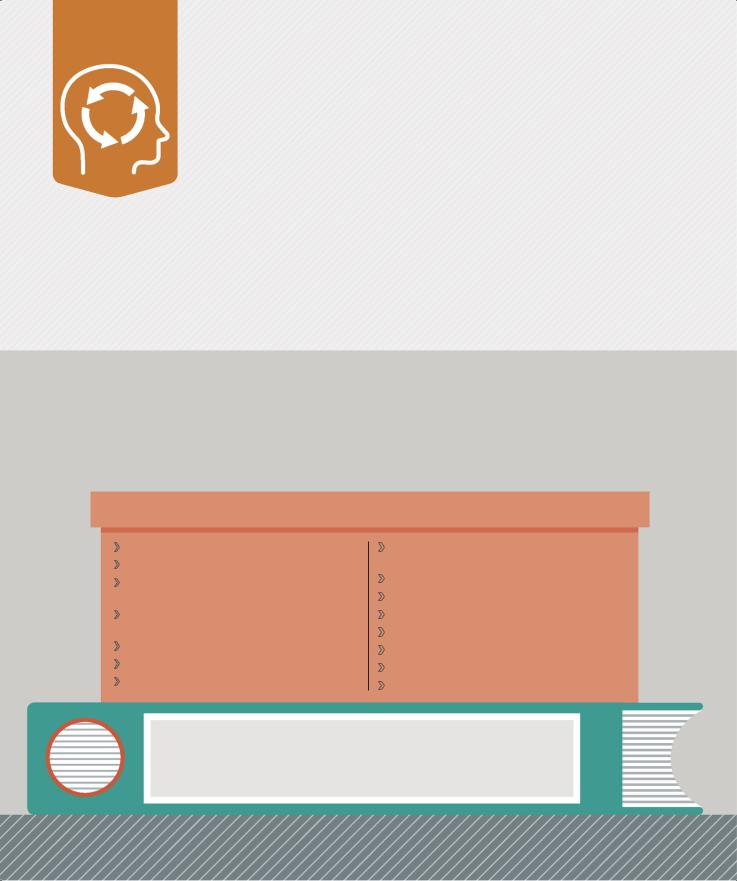
Diagnosing disorders
The medical diagnosis of a mental health condition is a complex process of matching an individual’s pattern of physical and psychological symptoms to behaviors associated with a disorder, or disorders. Some conditions, such as a learning disability or neuropsychological problems, are easily identified. Functional disorders that affect personality and conduct are more difficult,
however, as they involve numerous biological, psychological, and social factors.
What are mental health disorders?
Mental health disorders are characterized by the presence of unusual or abnormal mood, thinking, and behaviors that cause an individual significant distress or impairment, and disrupt their ability to function. Impairment occurring as the result of common stressors such as bereavement would not be considered a disorder. Diverse social and cultural factors impacting behaviors might also rule out the presence of mental health problems.
CATEGORIES OF DISORDERS
Mood disorders (pp.38–45)Anxiety disorders (pp.46–55)
Obsessive compulsive and related disorders (pp.56–61)
Traumaand stress-related disorders (pp.62–65)
Neurodevelopmental disorders (pp.66–69)Psychotic disorders (pp.70–75)Neurocognitive disorders (pp.76–79)
Addictive and impulse-control disorders (pp.80–85)
Dissociative disorders (pp.86–89)Eating disorders (pp.90–95)Communication disorders (pp.96–97)Sleep disorders (pp.98–99)
Motor disorders (pp.100–101)Personality disorders (pp.102–107)Others (pp.108–109)
Disorders can be classified into diagnostic groups (above); the two main works used to identify, categorize, and organize them are the World Health Organization’s
International Classification of Disease (ICD-10) and the American Psychiatric Association’s Diagnostic and Statistical Manual of Mental Disorders (DSM-5).
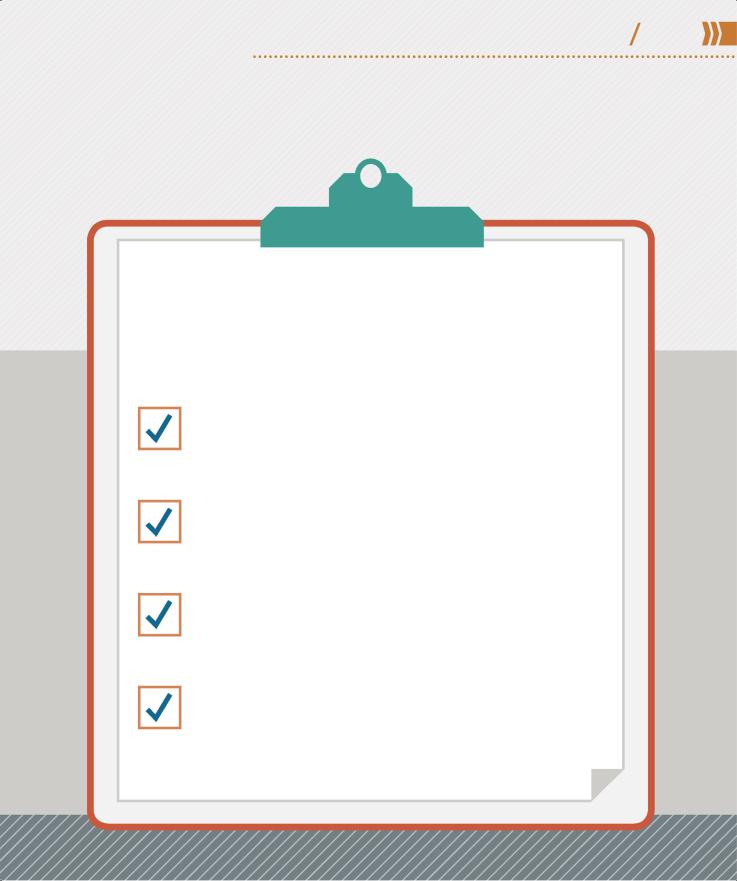
PSYCHOLOGICAL DISORDERS |
36 37 |
Diagnosing disorders |
1in4people will be affected by mental or neurological disorders in their lifetime
Assessment of a mental health condition
Clinical diagnosis is made only after a careful assessment process that includes observation and interpretation of a person’s behaviors and discussion with them and, if relevant, their family, caregivers, and specialist professionals. Putting a name to a person’s distress can help them—and their support systems—gain a deeper understanding of their difficulties and how to manage them better, but it can also negatively shape a person’s outlook and contribute to self-fulfilling prophecies.
Physical examination
A GP will first eliminate physical illness that could be causing symptoms. Medical examination can also reveal intellectual disabilities or speech disorders
due to physical abnormalities. Imaging techniques may be used to test for brain injury or dementia, and blood tests can reveal a genetic predisposition to certain disorders.
Clinical interview
If no physical illness is identified, an individual may be referred to a mental health specialist. They will ask the client about their life experiences, their
family history, and recent experiences that relate to their problem. The conversation will also aim to uncover any predisposing factors, strengths, and vulnerabilities.
Psychological tests
Particular aspects of a person’s knowledge, skill, or personality will be evaluated through a series of tests and/or tasks, usually in the form of checklists
or questionnaires standardized for use on very specific groups. For example, such tests may measure adaptive behaviors, beliefs about the self, or traits of personality disorders.
Behavioral assessment
A person’s behavior will also be observed and measured, normally in the situation where their difficulties occur, to gain an understanding of the factors
that precipitate and/or maintain their symptoms. The person might also be asked to make their own observations by recording a mood diary or using a frequency counter.
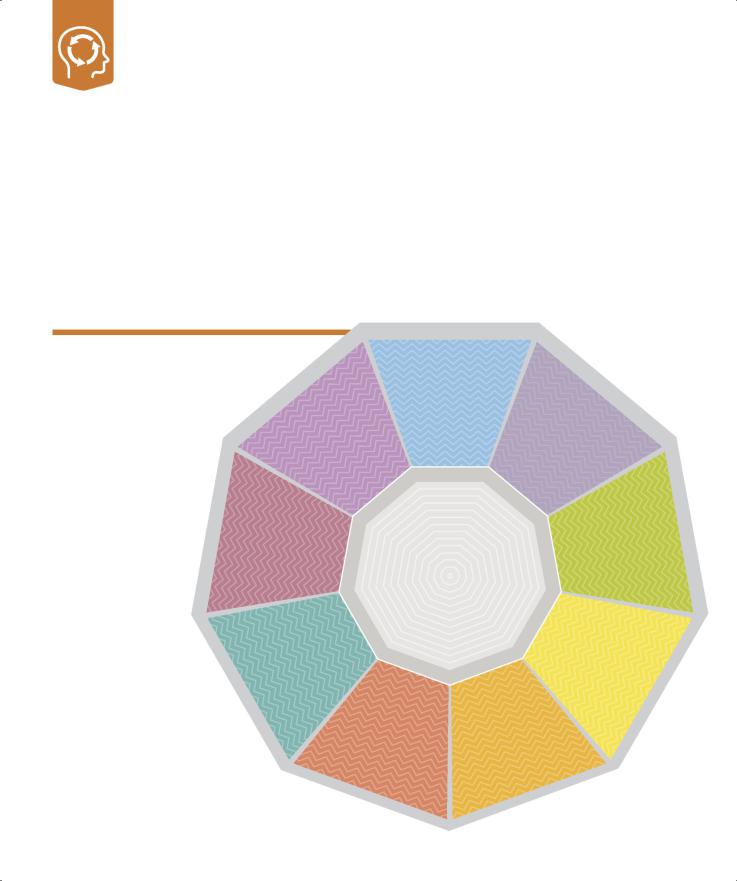
Depression
This is a common condition that may be diagnosed when a person has been feeling down and worried—and has lost pleasure in daily activities—for more than two weeks.
What is it?
The symptoms of depression can include continuous low mood or sadness, having low self-esteem, feeling hopeless and helpless, being tearful, feeling guilt-ridden, and being irritable and intolerant of others.
A person with depression is unmotivated and uninterested, finds it difficult to make decisions, and takes no enjoyment from life. As a result, the individual may avoid the social events that they usually enjoy, thus missing out on social interaction, which can cause
a vicious circle which sees them spiraling further downward.
Depression can make it difficult for a person to concentrate and remember things. In extreme cases the sense of hopelessness may lead to thoughts of self-harm or even suicide.
EXTERNAL CAUSES
Internal and external causes
A wide range of biological, social, and environmental factors can cause depression. External causes predominantly encompass life events that can have a negative impact on a person, and often act in combination with internal causes—those within an individual—to trigger depression.
“… depression is so insidious … it’s impossible to ever see
the end.”
|
Money, or the lack |
|
|
|
of it, and the stress |
|
|
|
caused by financial |
|
|
Relationship |
concerns and |
Stress when a |
|
worries about debt. |
|||
problems leading |
person cannot cope |
||
|
|||
to depression in |
|
with the demands |
|
the longer term. |
|
placed on them. |
|
|
INTERNAL |
|
|
|
CAUSES |
|
Pregnancy and birth and the overwhelming prospect of parenthood for new mothers.
Loneliness as a result of health or disability, especially in the elderly.
Personality traits, such as neuroticism and pessimism.
Childhood experiences, especially if the person felt out of control and helpless at the time.
Family history, if a parent or sibling has had depression.
Long-term health problems, such as heart, lung, or kidney disease; diabetes;
and asthma.
Job/unemployment impacting status and self-esteem, perception of a positive future, and ability to engage socially.
Bereavement following the death of a family member, friend, or pet.
Bullying |
Alcohol and |
among children |
drugs due to the |
and adults, whether |
physiological, social, |
physical or verbal, |
and economic |
face to face or |
consequences of |
online. |
addiction. |
Elizabeth Wurtzel, American author
